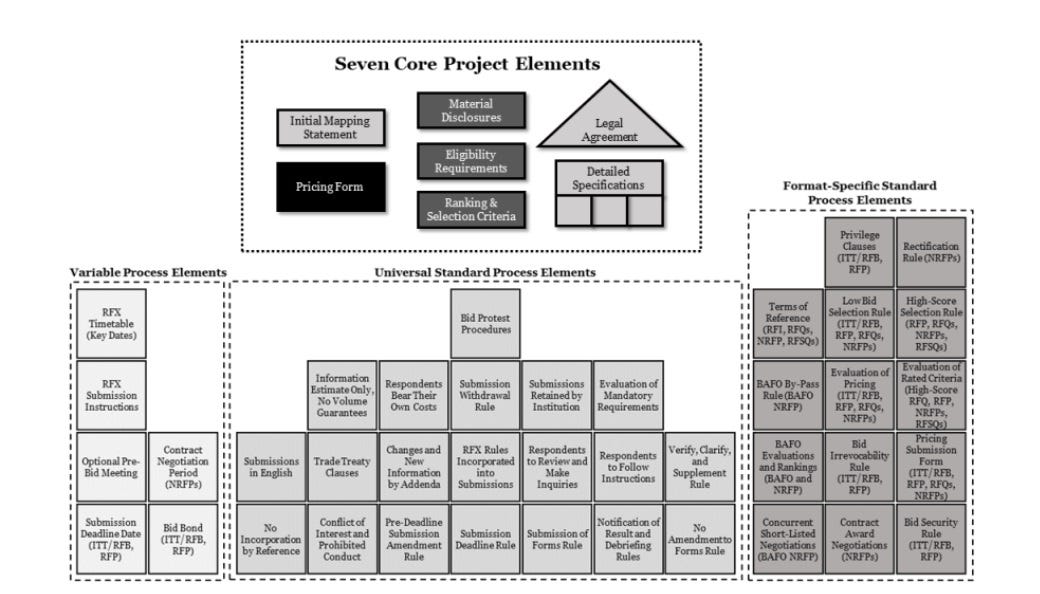What is the most common complaint about the archaic RFP business process? Time. It takes time to research a category market (even if you have deep domain expertise). It takes time to develop the statement of work, a problem that is compounded if you need to coordinate a committee of people in writing the RFP. It takes time to solicit proposals and answer questions. It takes time for suppliers to decide whether to respond and, if so, to develop the proposal. It takes time to evaluate the proposals and score them to select one with whom to negotiate a contract.
Templates are a way to impose order and accelerate the timeframe. They superimpose a structure on the document for buyers who write them.
See this article from The Procurement Office which, in turn, refers to the UNCITRAL protocol.

http://procurementoffice.com/newsreel-for-september-9-2019/
Some of these relate to the procedure. For example, every RFP will have a procedure for suppliers to contest a decision, the “Bid Protest Procedure” from the chart above. In this framework, there are elements present in every process, elements that are determined by the type of format one is executing, and elements that vary from instance to instance.
Sophisticated procurement organizations may have templates for the first two; it is much less likely that they have a template for the third.
Specifically, I refer to the description of the Statement of Work. This is the idiosyncratic element of the RFP that marries the buyer committee’s work to gather intelligence about the specific category market with their individual requirements.
More than this, it often requires finding information about what the buyer organization has done in the past.
This data is often unavailable to buyer committees. It may be siloed, or difficult to find. Dark data refers to the way in which this data tends to be locked up in systems and not used.
Ideally, buyers would have one place where you could see examples of recent RFPs written by other organizations for the same category.
Think of it as a template for setting up the Statement of Work. Given enough examples, despite the idiosyncratic requirements of the buyer’s situation, there should be enough commonality to provide the framework for the Statement of Work. The professional procurement staff can take care of wrapping the procedural parts and finishing the RFP.
EdgeworthBox enables this database. It is a platform for transforming the RFP business process to drive cost reduction efficiencies (including cost avoidance), to promote enterprise-wide strategic engagement with purchasing through an easy-to-use interface, and to enable the use of data and social networking to obtain better outcomes. Our platform, borrowing features from financial markets in an interface we deem to be like a “Bloomberg machine for procurement,” enables much easier search for and vetting of suppliers while also facilitating communications with our contemporary messaging platform. We call it Network-Based Sourcing™. Drop us a line. We would love to talk to you more about your individual situation and how we can help you.




